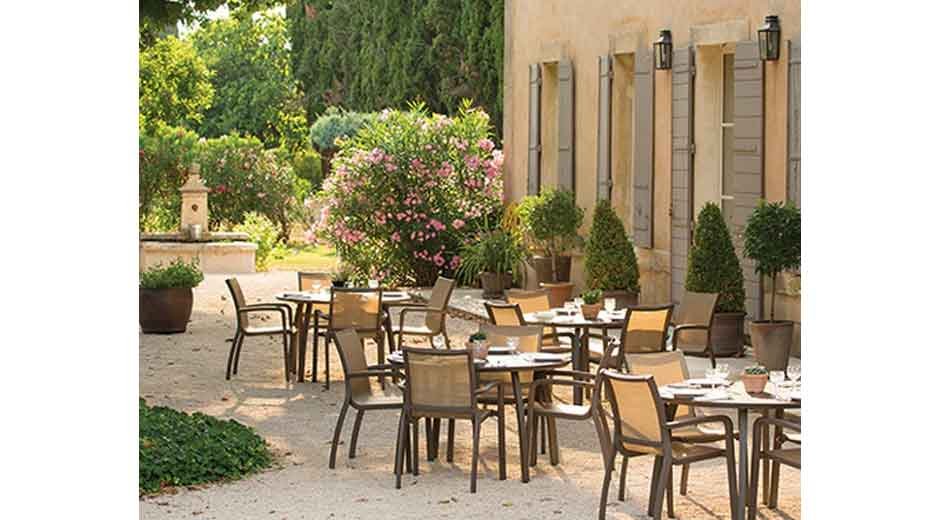In the heart of every bustling restaurant lies a rhythm: the constant movement of servers, the hum of conversation, the clinking of glass and plate. Amid that activity, one element quietly bears the weight of it all, the restaurant chairs. They are tested daily by crowds, spills, and shifting floor plans. In fast-paced eateries, durability is no longer optional; it is an expectation. The rise of heavy-duty seating represents more than a design trend. It signals a new era in hospitality, one that values endurance as much as elegance.
A chair that can withstand hundreds of daily uses without losing comfort or style becomes an invisible asset. It anchors the dining room, ensuring that every guest’s experience begins from a place of stability. For restaurant owners, the investment in heavy-duty seating is not just practical but strategic. It protects aesthetics, reduces maintenance costs, and reflects a brand’s commitment to quality.
Built for the Demands of Modern Dining
Busy restaurants operate like living organisms. Tables shift for large parties, chairs move constantly, and cleaning happens between every service. Furniture must therefore perform at the highest level of reliability while retaining visual appeal. Modern heavy-duty seating is engineered to meet that challenge.
- Reinforced frames add structural strength without increasing bulk.
- High-density foam cushions maintain shape and comfort after long use.
- Commercial-grade finishes resist scratches, moisture, and cleaning chemicals.
These innovations ensure that every chair and bar stool maintains form and function even under pressure. They embody the fusion of craftsmanship and technology, where resilience becomes a design principle rather than an afterthought.
Materials that Withstand the Rush
The secret behind long-lasting furniture often lies in material selection. Solid hardwood remains a trusted choice for its natural strength, while metal frames, especially steel and aluminum, deliver unmatched endurance in high-traffic environments. Upholstery fabrics are evolving too, with performance textiles that repel stains and resist fading from constant cleaning.
Durability now comes in many forms. Synthetic leathers offer the same tactile richness as natural hides but with improved resistance to wear. Powder-coated finishes protect against rust, and moisture-proof glues keep joints stable through constant temperature changes. The modern dining chair is not merely built; it is engineered for survival.
The Balance Between Strength and Style
Durable furniture no longer needs to look industrial. Today’s designers are proving that heavy-duty seating can be graceful, tactile, and inviting. Subtle contours, smooth finishes, and ergonomic proportions create an experience that feels refined even in high-volume spaces.
Guests rarely notice when a chair performs perfectly, but they always remember when it fails. A wobbly seat or worn fabric distracts from the dining experience. Good design prevents that from happening, ensuring comfort becomes an expectation rather than a luxury.
Durability as a Form of Brand Identity
Restaurants that invest in strong, long-lasting furniture send a message before a single dish is served. They communicate consistency, professionalism, and care. For brands built around reliability and warmth, durable seating becomes part of their visual and emotional language.
- Sturdy seating tells guests they can relax without worry.
- High-quality materials signal thoughtful investment in long-term comfort.
- Consistent design across multiple locations builds brand familiarity.
These subtle cues create trust. Guests equate physical strength with operational stability, forming an unconscious connection between comfort and credibility. In this way, durability becomes branding in its purest form, honest, tactile, and enduring.
Sustainability Through Longevity
The longer furniture lasts, the less waste it creates. Heavy-duty chairs, when responsibly made, represent sustainability through endurance. Instead of frequent replacements, restaurants benefit from designs built for decades of use. Many manufacturers now source materials from certified suppliers, employ eco-friendly finishes, and design pieces that can be repaired rather than discarded.
This approach aligns sustainability with practicality. A durable chair not only saves resources but also saves reputation. Guests increasingly value businesses that show environmental awareness, and longevity offers a visible expression of that commitment.
The Business Case for Strength
Beyond aesthetics and ethics lies the financial logic of durability. Quality seating may cost more initially, but its long lifespan reduces repair and replacement expenses. Over time, that investment translates into profit protection. Fewer disruptions, lower maintenance, and consistent presentation all contribute to operational success.
For restaurant owners, durability is not about restraint; it is about freedom. Strong furniture allows flexibility in layout, design updates, and event planning without fear of damage. The ability to rearrange a space easily and confidently is itself a mark of smart design.
A Foundation for Every Experience
In the constant motion of a busy eatery, heavy-duty seating becomes the still point, the reliable foundation that holds everything together. It carries the weight of the brand’s promise and the comfort of every guest who walks through the door.
When design, material, and craftsmanship come together with purpose, strength becomes invisible. What remains is a seamless experience that feels natural, stable, and lasting. Durable seating is not just furniture; it is the heartbeat of hospitality, built to serve, to endure, and to welcome, one guest at a time.






